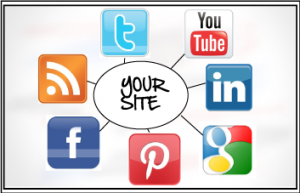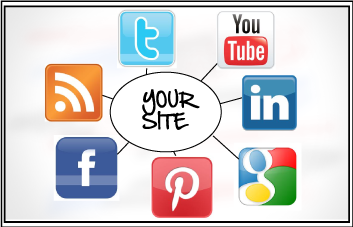 This article is brought to you in partnership with Verisign, the global leader in domain names and internet security.
This article is brought to you in partnership with Verisign, the global leader in domain names and internet security.
When today’s customer wants to learn more about a business, the first place they usually turn is the Internet. This has made an online presence essential to a brand’s success. Setting up both a website and social media accounts means when customers enter search terms in Google, information about your company will appear.
But merely having an online presence isn’t enough. Studies have shown that businesses that actively engage customers can expect to grow 40 percent faster than they would if they didn’t have an online presence at all. The first step is to online success is choosing a domain name, but the work only begins there. Here are a few steps you should take to build and maintain an active online presence.
Putting Your Domain Name to Work
Once you’ve registered a domain name, you’ll likely begin immediately working to publish a winning website. But there are several different ways you can use this domain name to build your business’s online presence. Building and launching a new website that shows off your products or services is one of the most common ways. But there’s another option.
Instead of building a new website, you can actually redirect your domain to an existing website. This could be an existing platform for your business, like a WordPress or Blogger blog. However, you can also redirect a new domain name to a social media site, which can act as your business’s temporary landing page. While having both a website and social media presence that work together is ideal, sometimes new businesses can’t realistically do both in their early, more formative days.
Starting on Social Media
For any new business, social media is a great way to set up on an online presence at no cost whatsoever. Social media sites come with a built-in base of potential customers, making them the perfect outlet for testing the online waters. However, unlike your own website, you won’t have the level of control you’ll have with your own website. By registering your business’s web address and directing it to point to one of your social media accounts, you’ll be able to set up your online identity, build your brand, and market your business with a professional web address that customers can easily remember.
Of course, social media is at its best when it’s being used as a marketing tool. As soon as possible, though, brands should begin working on developing and deploying a website, which will give a brand optimum control. With so many drag-and-drop-based website development tools, businesses can create their own websites without even calling upon a design professional to help. Once a website is in place, a brand will have the benefit of a scalable online presence that can be updated as needed.
Once designed, your business’s website should serve as your central hub, providing a place for customers to go when they need information. All of your other marketing efforts should drive customers to that website to engage, learn, and, hopefully, buy. Over time, your website and social media presences will serve to complement each other, offering similar information but in different ways; At https://www.salesforce.com/blog/2019/01/how-to-create-a-customer-centric-experience.html you can learn how to take advantage of it to provide a good customer centric experience.
Your business should use its website alongside its social networking efforts to connect with customers and get the word out about the great work you’re doing.
 This article was written in partnership with Verisign, the global leader in domain names and internet security. All opinions and experiences expressed are my own.
This article was written in partnership with Verisign, the global leader in domain names and internet security. All opinions and experiences expressed are my own.

